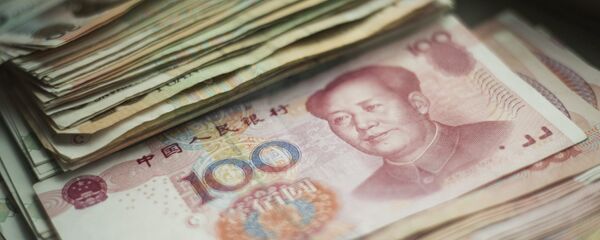"Focused", "formal" and "quiet", is his description of the delegation that had come to study the overall concept of a "free zone". He recalls that the officials seemed "indifferent" when they first arrived, and that there was "no big conversation".
"But they were very engaged. They were listening all the time very carefully," he said, "I felt they were absorbing everything."
The eight Chinese officials came to the mid-west of Ireland at a time when the reformist Chinese leader Deng Xiaoping was considering his options for energising China's economy.
The Shannon free zone model gained popularity among countries around the world trying to industrialize. Established in 1959, it is widely known as the world's first free trade zone with special tax incentives and simple custom procedures attracting foreign investment.
After touring several other countries, the Chinese delegation arrived in Shannon and attended a three-week training program on how to set up an industrial free trade zone, during which they were introduced to the world's first duty-free shop and a special zone based on low tax and free trade.
Callanan believes that shared commonality is a key factor that made the Chinese go to Ireland.
"Both Ireland and China have been on the receiving end of colonialism and I think China would have been sensitive to where it learns its lessons from, because there were all these cultural and political issues," he said. "So to be involved with a neutral country to share with China the negative colonial experience, I think was very important.
Callanan said the Chinese officials' reserved manner at the beginning of the program took the hosts by surprise, as Irish people are so much more comfortable talking, or even arguing.
It did not take long to break the ice according to Callanan, especially when the Chinese learned about a story that shared the nations' similar experience of poverty. During Ireland's Great Famine in the 1840s, about a million people died and a million more emigrated.
"We talked about how we were coming out of poverty when we gave an historical background of Shannon, back in the era of poverty and hunger, and this was not just about the customs or incentives, but about how we got our escape from being poor," Callanan said. "I think that resonated with the Chinese people because they understood that in their folk memory."
In Callanan's recollection, the training program consisted of classroom sessions and site visits. In the class, the Chinese visitors were introduced to the layout of the industrial stage, the physical infrastructure and the design of the incentives.
Callanan noted there was an interesting spectrum of skills among the people in the delegation with different areas of expertise. "Some of them had a very strong interest in the engineering aspect, and some in the marketing aspect," he added.
"They genuinely wanted to learn, but I do not think they were on a mission at that stage, because I do not think they knew if it would work. They were exploring," Callanan said.
Relaxed facial expressions from the Chinese toward the end of the three weeks gave a clear indication to Callanan that the program was a success.
The Chinese government subsequently opened four special economic zones in 1980 based on the Shannon model. These became a major driving force for China's economy, allowing private investment to flow into the country and for a huge transfer of skills and technology to take place.
The establishment of the Shenzhen Special Economic Zone, the first town modelled on Shannon, was a turning point for China's economy.
Tom Carroll, the former manager of the development cooperation program, also involved in the training for the Chinese delegation in 1980, said: "When I visited Shenzhen in the mid-1980s,I was kind of overwhelmed because this was one enormous building site. We were driving for about 30 to 45 minutes, and it was nothing but development, so that made a huge impression on me."
Once a small fishing village, the city of Shenzhen, now with a population of 10 million, has grown to have a GDP bigger than Ireland, exceeding $340 billion (241 billion pounds) in 2017.
Carroll said, "What I always find it very difficult to understand is the magnitude of it in China, and how you scaled up the whole thing –that's kind of beyond my thinking.
"You need to have that insight because very often when you are thinking of such a big scale, you don't understand the importance of something very simple," he added.
This article was originally published in China Daily





